
ESPAÑOL
Cliente: Autoridades Locales
Arquitectos:
Guglielmo y Bonanno Pisano, Tres primeros niveles (entre 1173-1178)
Paralizada (entre 1178-1272)
Giovanni di Simona, plantas 4-5-6 y 7 (entre 1272-1284)
Tommasso di Andrea Pisano, Campanario de estilo Gótico (en 1372)
Altura media: 57 metros
Estilo: Cuerpo Románico y Campanario de coronación Gótico.
En la región de la Toscana, concretamente en la ciudad de Pisa se encuentra una de las torres más famosas del mundo por excelencia. La preciosa edificación se ha hecho enormemente famosa gracias a la inclinación que se formó en el inicio de su construcción. En la actualidad posee un ángulo de inclinación de cuatro grados o una separación de 3.9 metros de la vertical con respecto a su base. Hace de campanario para la Catedral Románica de la ciudad de Pisa que se sitúa anexa a la famosa torre. Fue construida en diferentes fases y las obras se iniciaron en el año 1173 con una cimentación de tres metros de altura y sobre un terreno algo débil. Por este motivo, desde el inicio de su construcción y al alcanzar los primeros niveles, la torre comenzó a inclinarse de una forma asombrosa. En la actualidad existe un desnivel de casi un metro entre la altura más baja sobre el nivel del suelo, con respecto a la altura de su parte más alta. Su construcción duró alrededor de 200 años, aunque, no obstante, la torre estuvo paralizada durante casi un siglo debido a su creciente inclinación cuanto todavía contaba con unos pocos niveles. En el año 1178 fue construida la tercera planta y durante casi un siglo, entre los años 1178 y 1272, estuvo paralizada la construcción debido a las guerras entre los pisanos y los estados vecinos; este hecho ayudó a que el terreno algo débil pudiese irse asentando en gran medida evitándose así el derrumbe de la inclinada torre.

En el año 1272, por tanto, se retomaba la obra mediante el diseño de ampliación de la torre con cuatro nuevas plantas de estilo románico por parte del arquitecto Giovanni di Simone. La construcción se detuvo en el año 1284 por la batalla de Meloria, y no sería hasta el año 1372 cuando se construyó el campanario de estilo gótico que lo corona y que fue diseñado por el arquitecto Tommasso di Andrea Pisano; su diseño ayudó a crear una bella armonía entre el estilo románico de la torre con el estilo gótico del campanario que lo corona y que cuenta con 7 campanas. Terminada su construcción, la Torre de Pisa se distribuye básicamente en ocho niveles y dispone de una altura media de 57 metros hasta la cúspide a la que se puede acceder a través de una escalera de caracol con 294 escalones. La base circular, que posee un diámetro de 15.5 metros, cuenta con unos muros de asiento de seis metros de espesor. Una primera planta con pilares clásicos y arcos ciegos, da paso a seis plantas decoradas con pilares románicos que se sitúan a lo largo del perímetro del edificio. Un campanario de estilo gótico de menor diámetro que el cuerpo central, corona esta bellísima obra que cuenta con un peso total de 14.700 toneladas.
El texto de este artículo se incluye en mi libro titulado "CONSTRUCCIONES FAMOSAS" / The text of this item is included in my book title "FAMOUS CONSTRUCTIONS" Español - English
by José Miguel Hernández Hernández
Publisher, Writer and Architectural Photographer
www.jmhdezhdez.com
Video promotional
ENGLISH
Client: Local Authorities
Architects:
Guglielmo and Bonanno Pisano, the first three levels (between 1173-1178)
Paralyzed (between 1178-1272)
Giovanni di Simone, 4-5-6 plants and 7 (between 1272-1284)
Tommaso di Andrea Pisano, Bell Gothic (in 1372)
Average height: 57 meters
Style: Body Romanesque and Gothic bell coronation.
In the region of Tuscany, specifically in the city of Pisa is one of the most famous towers in the world for excellence. The beautiful building has become extremely popular due to the slope that was formed at the beginning of its construction. He currently has an angle of four degrees or separation of 3.9 meters from the vertical to the base. It makes for the Romanesque cathedral bell tower of Pisa is located attached to the famous tower. It was built in different phases and the work started in the year 1173 with a foundation of three meters high and on a rather weak field. For this reason, since the beginning of its construction and to reach the top levels, the tower began to lean in an amazing way. At present there is a drop of almost one meter between the lowest height above the ground with respect to the height of its top. Its construction lasted over 200 years, although, however, the tower was paralyzed for almost a century due to its increasing inclination and they still had a few levels. In 1178 the third floor was built for nearly a century, between 1178 and 1272, construction was stalled because of the wars between Pisa and neighboring states, this fact helped somewhat weak field could go seating thus largely avoiding the collapse of the leaning tower.

In 1272, therefore the work was resumed through the design of the tower extension with four new plants in the Romanesque style by architect Giovanni di Simone. Construction was halted in 1284 by the Battle of Meloria, and it was not until 1372 when it was built in Gothic style bell tower that crowns and was designed by the architect Tommaso di Andrea Pisano, the design helped create a beautiful harmony between the tower Romanesque Gothic style bell tower that crowns and which has 7 bells. Upon its completion, the Tower of Pisa is distributed mainly in eight levels and has an average height of 57 meters to the summit which can be accessed via a spiral staircase with 294 steps. The circular base, which has a diameter of 15.5 meters with a seating walls six feet thick. A first plant with classical pillars and arches, leads to six floors decorated with Romanesque pillars are located along the perimeter of the building. A Gothic steeple of smaller diameter than the central body, crown this beautiful work has a total weight of 14,700 tonnes.

"Images Pisa Tower, Toscana, Italy"
Image 1-3 Copyright © Tanya Peasgood, Flickr
Image 2 Copyright © Bill Kennedy, Flickr
Image 4 Copyright © Lonewolf1976
"Text" Copyright © José Miguel Hernández Hernández
Editor, Escritor y Fotógrafo de Arquitectura /
Publisher, Writer and Architectural Photographer
Todos los derechos reservados / All rights reserved
www.jmhdezhdez.com
Related articles / Artículos relacionados
El David
Piazza della Signoria, Fiorenze, Italy
Michelangelo Buonarroti
Ponte Vecchio
Florencia, Tuscany, Italy
Taddeo Gaddi and Giorgio Vasari
Coliseum
Rome, Italy
Flavian Dinasty
MUY IMPORTANTE!!! VERY IMPORTANT!!!
Deja tu comentario sobre este reportaje al pie de este post donde dice "Publicar un comentario en la entrada"; me será de gran valor para seguir mejorando este sitio web y te contestaré con la mayor brevedad posible... Muchas gracias!
No obstante, si te ha resultado interesante este reportaje y también el Blog en general, por favor, no dudes en hacerte Fan de la página de Fans del Blog de José Miguel Hernández Hernández en Facebook aquí
Nota importante: Una vez que hayas entrado en la página de Fans del Blog en Facebook, con sólo hacer click en el botón de "Me gusta", a partir de ese momento estarás al tanto de todos los nuevos reportajes interesantes relacionados con la Arquitectura y la Ingeniería que aquí se vayan publicando para no perder ningún detalle...
También puedes suscribirte por e-mail (te llegaría un e-mail con el enlace de cada artículo en el mismo momento en que sea publicado), o bien también puedes seguir el Blog a través de Twitter aquí
Nos vemos en el Blog!
Leave a comment on this story at the bottom of this post where it says "Post a comment in the entry", I will prove invaluable to further improve this website and I will answer as soon as possible .. . Thank you very much!
However, if you this story was interesting and the blog in general, please do not hesitate to make Fan Fans of the Blog page José Miguel Hernández Hernández on Facebook here
Very important: Once you enter the page Blog fan of Facebook, simply click on the button Like "From that moment you are aware of all new interesting stories related to the Architecture and Engineering are published here to avoid losing any detail ...
Can also subscribe by e-mail (I would e-mail with a link to each item in the same time it is published), or you can follow through Blog Twitter here
See you at the Blog!
HOME GEOGRAPHY ARCHITECTURE ENGINEERING SKYSCRAPERS
BRIDGES BUILDINGS TOWERS PUBLICATIONS ABOUT ME CONTACT
Copyright © José Miguel Hernández Hernández
Editor, Escritor y Fotógrafo de Arquitectura /
Publisher, Writer and Architectural Photographer
http://www.jmhdezhdez.com/
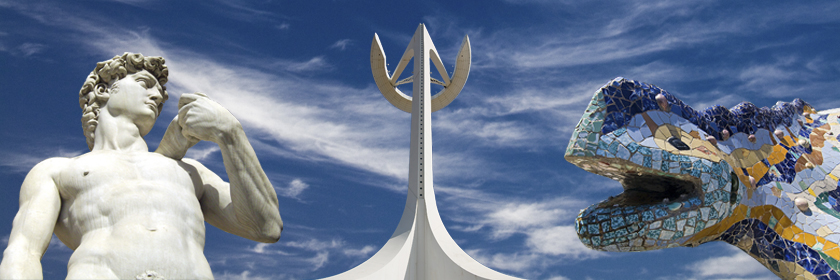


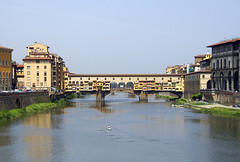






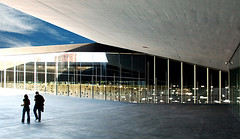



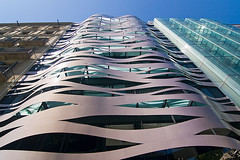



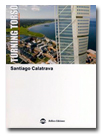

No hay comentarios:
Publicar un comentario